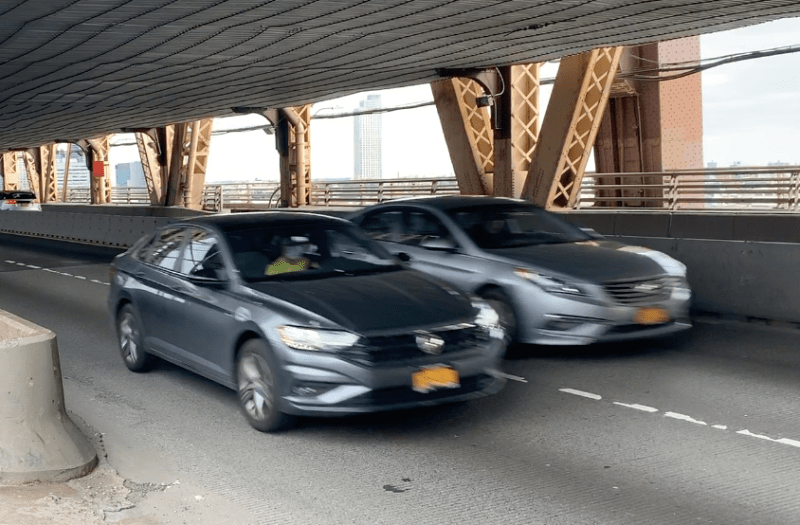By the Way, NYPD, the Speeding Epidemic is Certainly Not Over

The NYPD is kidding itself — and leaving New Yorkers endangered — if it thinks the speeding epidemic is over.
At a City Council hearing on April 24, NYPD Transportation Bureau Chief Mike Pilecki testified that speeding was on the decline, adding, “We’re trending in the right direction.”
Pilecki made the comment in reference to data from April 21 (the last day of data available in the city’s open data portal, and the last entry on the chart below), when the city’s speed cameras issued 25,541 summons. That number is indeed slightly lower than the peak speeding day seven weekdays earlier — when more than 26,000 summonses were spit out by the cameras.
But the total number of camera-issued summonses is up 83 percent since the beginning of the state’s “pause” order on March 23, compared to a comparable 22-weekday period in January and February, when traffic volumes were at their normal congested disaster.

Drivers greeted the beginning of the “pause” with a 99-percent increase in speeding between March 23 and April 3, based on camera-issued tickets. Since that spike, tickets remain up more than 71 percent compared to a similar period in February. And on any given day, camera-issued tickets have been as much as 175 percent higher than a comparable day before the coronavirus crisis.
New York City speed cameras operate only in residential areas, but there is ample evidence that speeding has also increased dramatically on city highways, the result of so few cars clogging up the roads.
It’s not as if the NYPD is doing nothing to stop the recklessness. The Highway Patrol wrote 1,524 speeding tickets in the seven days between April 14 and 20 compared to just 1,174 in the same period a year earlier, the NYPD told Streetsblog.
That’s a nearly 30-percent increase — but equal to fewer than three speeding tickets per precinct per day. And on Monday, April 20, when city speed cameras issued 17,865 speeding summonses, the Highway Division wrote just 263.
Officially, of course, the NYPD is keenly focused on reckless driving.
“The NYPD has been and will continue to be focused on Vision Zero, with collision and injury data guiding where our assets are best deployed during this pandemic,” Pilecki told Streetsblog in a statement. “The NYPD continues to focus on combating speed on the highways and on the streets, where cars are most likely to interact with bicyclists and pedestrians as well as with first responders, food delivery workers and other essential users of the roads.”
That said, the Highway Bureau has not added personnel, Pilecki admitted, adding, “However, as officers assigned there have adapted to a complex and dynamic COVID-19 environment, they are engaged in a deep and ongoing focus on speed enforcement.”
Meaning? “We have beefed up our radar patrols, including on weekends; added marked cars along visible stretches of highway; and strategically assigned officers to drive at the speed limit – and in the left lane with their lights on – to reinforce traffic safety. Additionally, we have aligned patrols along the city’s local roads with sites the city’s speed-camera data indicates are among the highest for speeding offenses.”
The good news? Despite the speeding epidemic, overall crashes are down in the city, likely because even reckless drivers have fewer other cars to hit, what with total vehicle miles traveled in the city down 80 t0 90 percent, according to Streetlight Data. Between late March and late April, total collisions are down 77 percent across the city and injuries are down 75 percent, according to the NYPD.
But the speed at which drivers are traveling on the COVID-19-affected roadways is an issue that may not simply go away with the end of the pandemic if drivers become accustomed to trips taking much less time to complete — and want it to continue.